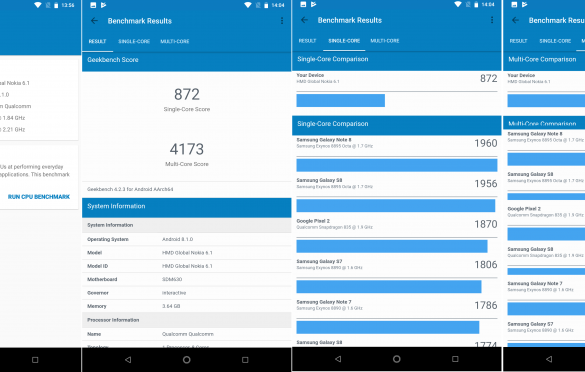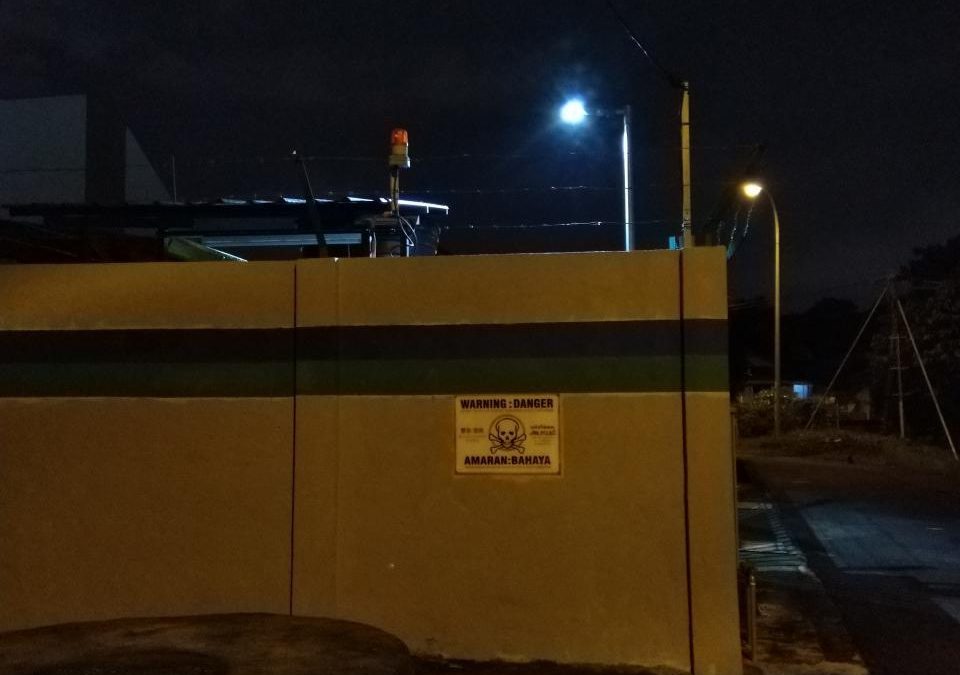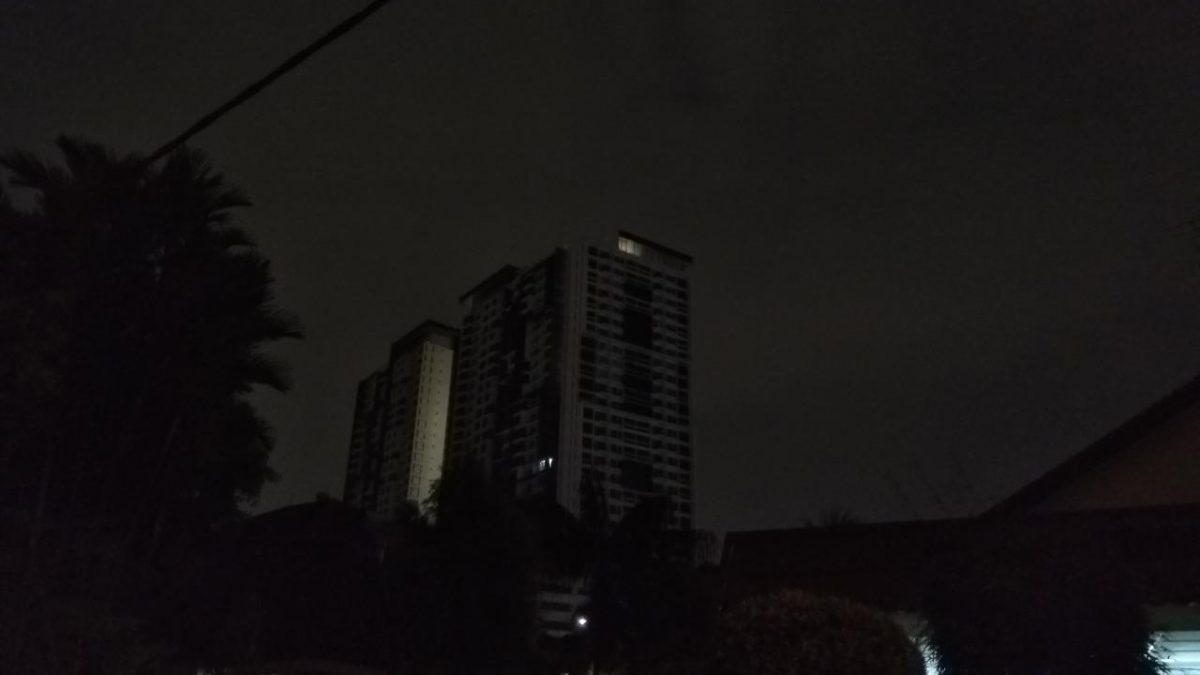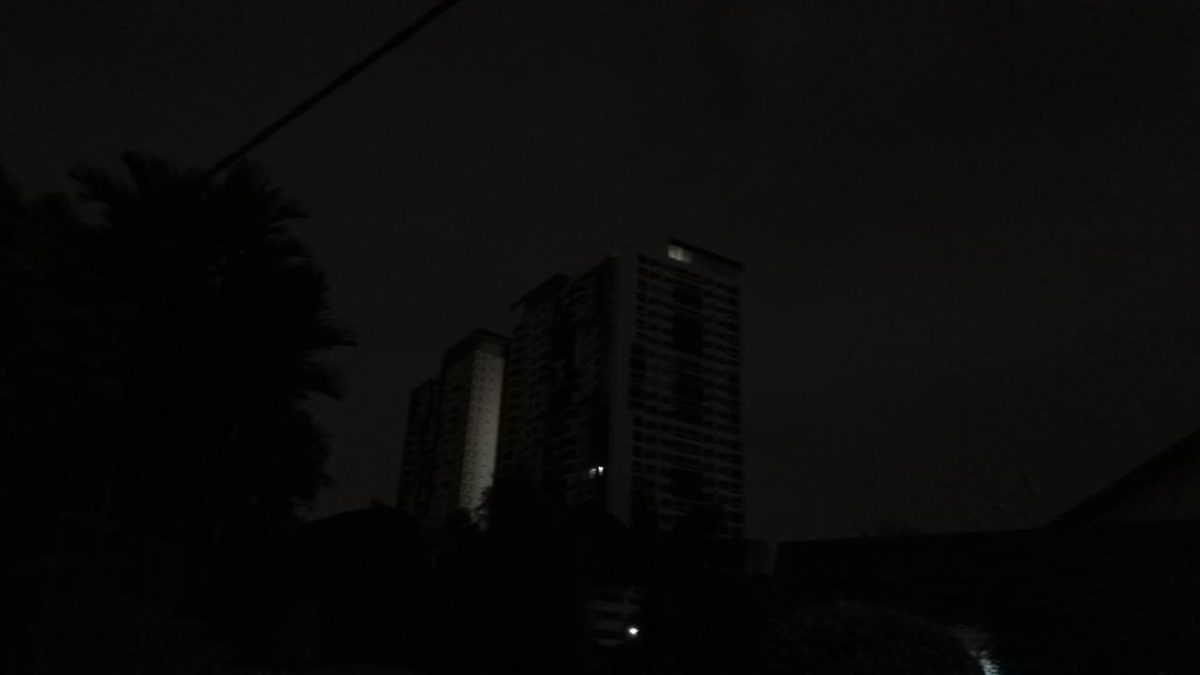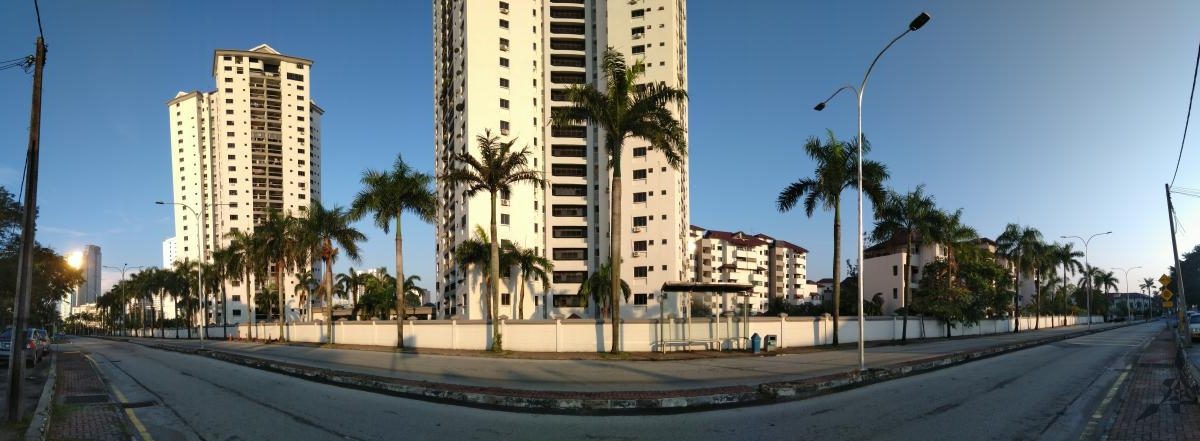6.5 Score
Pros
- Solid build quality
- Fits comfortably in the hand
- Snappy performance and multi-tasking
- Clean user interface
- Good performing rear camera
Cons
- Lacks a secondary camera
- No water resistance
- Expensive
- Bad placement of fingerprint scanner
The Nokia 6.1 was released back in January of this year, and arrived in Malaysia a couple of months back. It’s HMD Global’s latest foray into the mid-range handset market and we’ve been given a chance to test it out. Now, it’s time we gave our verdict on this device in this Nokia 6.1 review.
Design and Build Quality
When it comes to design, HMD is keeping it simple yet beautiful with the Nokia 6.1. This rather no-nonsense look gives off a sleek design. To add to the simplicity, accents have been incorporated into the frame, as well as the camera module, giving it a premium look. Even the buttons and the fingerprint scanner come with the accents, adding to the stylishness of the phone. The colour of the accents will depend on the colour of the phone itself. As for the unit we’re reviewing, it’s a blue device with gold accents.
The body of the Nokia 6.1 itself is made out of anodized aluminium and it feels rather sturdy and premium in hand. This gives it a weight of 172g, which is enough to give off a solid feeling yet won’t give you finger cramps through prolonged usage. Chamfered edges on the phone will give users a solid grip, and I’m thankful for such a feature as this device is rather slippery. Also, there is no water resistance, which would have been a nice inclusion for such a smartphone.
On the back, a single camera module and a fingerprint scanner can be found. This is accompanied by the Nokia branding and AndroidOne wordings at the bottom. The volume rocker and the power button are placed on the right hand side and these buttons are rather clicky. The SIM-card / microSD card slot is placed on the other side, while a 3.5mm headphone jack is found up top. Moving to the bottom, a USB Type-C port is placed in the centre, while a mono-speaker is on the left. Now, on the front, a decent 5.5-inch IPS LCD takes the main stage, with a selfie camera up top accompanied by the Nokia brand.
Specification & Benchmark
When it comes to specs, the Nokia 6.1 sports decent internals including a Qualcomm Snapdragon 630 processor. Memory wise, it comes in two options: 3GB RAM + 32GB storage, and 4GB RAM + 64GB storage.
Attached below are the benchmark scores for the Nokia 6.1. It should be noted that benchmark scores merely showcase raw performance and may not translate to real life usage. However, it should give you a rough estimation of its capabilities.
Display
The display found on the Nokia 6.1 is a 5.5-inch IPS LCD with a resolution of 1920 x 1080 pixels resulting in a pixel density of 403. One great thing about this screen is the fact that a notch isn’t present and there’s no 18:9 aspect ratio. Honestly, I haven’t seen a phone with such an aspect ratio as found on the Nokia 6.1 for the better part of 2018, and it’s a rather welcoming sight. The size of the display is perfect for one-handed usage, and I didn’t find myself having to perform acrobatics with my fingers to reach across the screen.

I’m generally satisfied with the display- it has deep blacks, comparable to even some OLED displays. However, it falls short when it comes to colour accuracy, though it will not disappoint you unless you use a broad range of phones, and will be able to tell the difference. While the brightness of the screen doesn’t go up extremely high, the sunlight legibility was impressive to say the least. Under direct sunlight, I would only crank the brightness halfway up and it would suffice. This is unlike most displays whereby the brightness is at maximum under similar conditions. Minimum brightness is also pretty low, making it idle for use in the dark.
Performance
When it comes to performance, the Nokia 6.1 does the job well. This is likely due to the new Qualcomm Snapdragon 630 powering it coupled with the 3GB / 4GB of RAM. Opening of apps was fast, and I didn’t experience any form of lag during my time with it. Usage of everyday apps such as Facebook, Instagram, Snapchat and such was flawless, and I’m glad to report that there were no crashes.

The Adreno 508 GPU also aided with games, though PUBG Mobile had to be played on low graphic settings for some reason. Even though the Nokia 6.1 is technically a block of metal, it rarely heated up during gameplay, and even then, the temperature was bearable. While I’m content with the performance of the Nokia 6.1, I can’t help but imagine what a beast this device would be if it came with a Snapdragon 660 chipset instead.
Battery Life & Charging
Packing a rather small (by 2018 standards) 3,000mAh non-removable battery, I wasn’t expecting much from the battery life of the Nokia 6.1. However, I’m glad to report that I’ve been proven wrong by this nimble device. On a daily basis, I manage to clock in anywhere from 5 hours to 6 hours of Screen-on-Time. Also, I would be left with about 18 – 25% of battery by the end of the day, after a 15 hour day. However, this may vary from person-to-person depending on your usage. As for me, I used lots of social media apps throughout the day, and occasionally played some games such as PUBG Mobile. If you tend to play lots of games, you’ll definitely get a lower screen-on-time than I did.
HMD included fast charging in its latest Nokia handset, and charging from 0 to 100% took about 1.5 hours. Charging was done with the included fast charger of course via the USB Type-C port.
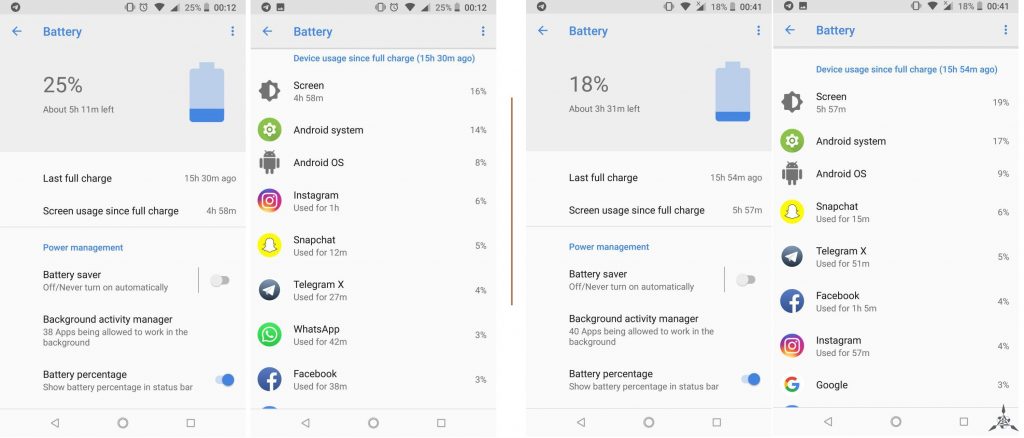
Camera
Rear Camera Interface

While it’s an Android One device, Nokia uses its own camera interface for the Nokia 6.1. When you open the camera app, there’s a shutter button at the bottom alongside the video mode on the left, and a shortcut to the gallery on the right. Top left, there’s a hamburger menu with options for Photo, Panorama, Pro, and Settings. Next to the hamburger menu is a beautification mode, a bothie mode, timer, and a HDR toggle button.
Image Quality
Under broad daylight, images taken with the 16MP sensor turn out rich with detail, are sharp, and also colour reproduction is accurate. Pictures also come with the right amount of contrast and saturation. However, the dynamic range could be better, and I would recommend auto HDR to be turned on. It does work when it’s needed and is able to restore highlights, especially when it comes to skies. Images mostly turned out natural when there’s sufficient light. If you’re looking for a handset capable of capturing images with bokeh effects, this isn’t the phone for you. There is neither a secondary camera to handle such images, nor is the software capable.
On top of that, there’s a dedicated Pro mode which I thoroughly enjoyed using. The mode allows you to control shutter speed, ISO, white balance, focus, and exposure compensation. What’s great about it is the ability to view the shot through the viewfinder before tapping the shutter button. On most mid-range devices, this is not a possibility including on phones such as the Mi A2, and Neffos N1. Now, when it comes to low-light, the Nokia 6.1 fails to impress and delivered rather grainy shots with significant amount of noise. Using HDR under such conditions surprisingly made matters worse, and shots came out extremely dark, though noise was reduced. Below, you may view sample shots taken with Nokia 6.1. If you would like to view all images in their full resolution, do take a look at this Flickr album.
Front Facing Camera
On the front, the Nokia 6.1 is equipped with an 8MP shooter with fixed focus. Selfies taken with came out generally nice with plenty of detail and right amount of contrast. Also, colour reproduction was accurate and images look true to life. This handset from HMD doesn’t come with any beautification software or front facing portrait mode.
Speaker & Security

The previous Nokia 6 came with a stereo speaker setup, whereby the earpiece acted as a secondary speaker. Now, the Nokia 6.1 comes with a monospeaker at the bottom, but it does do the job fairly well. Sound from it is loud and the clarity is high, not leaving much to be desired. Also, it is equipped with a 3.5mm headphone jack, and audio quality with headphones was good, with nice clarity and loud sounds.

When it comes to security, the Nokia 6.1 comes with the typical options such as Swipe, Pattern, PIN, and Password. There’s no face unlock which is available on many smartphones on 2018, but it’s not a deal breaker. This is thanks to the extremely fast fingerprint scanner present on the rear which unlocks the device almost instantly. The only issue I have with the fingerprint scanner is the fact that its rather flush with the rear. I found myself constantly tapping on the camera module to unlock the device thinking it was the scanner. However, I did get used to the placement of the scanner after a couple of days of usage.
UI & OS
The Nokia 6.1 runs AndroidOne out of the box with no custom UI. This means that it’s stock Android with no bloatware. At time of writing, it still runs on Android 8.0 Oreo, but we can expect Android 9.0 Pie in the coming months. What’s great about AndroidOne is the simplicity of it, instead of a confusing mess of pre-installed bloatware and way too many features.

This clean interface does come with a few drawbacks for manufacturers though, as they aren’t allowed to add on any of their desired features. Also, this might not be the software for every user, as some may prefer the exclusion of an app drawer, or the inclusion of manufacturer developed apps. However, one app which is designed by HMD happens to be the camera app, which is very much Nokia, and not the Google Camera. Apart from that, everything else in the device is stock Android.
Conclusion
After using it for a couple of weeks, I must say that the Nokia 6.1 is a pretty great mid-range smartphone. It is great if you’re looking for a no frills handset to satisfy your daily needs. The Nokia 6.1 can capture decent images, good performing processor, solid design, and simple interface. However, no smartphone is perfect (at least not yet), and the Nokia 6.1 is no different. For starters, there is no dual-camera setup on its rear, though the existing setup performs well. While this may not be a deal breaker for many, being able to capture trendy bokeh shots would’ve been nice. Also, priced at RM 1,100, the Nokia 6.1 is quite expensive, especially with the likes of Xiaomi, and ASUS.
For RM99 more, you may get a Xiaomi Mi A2 with 6GB of RAM and 128GB of storage for RM1,199. On top of that, it too runs on AndroidOne, and is powered by a faster Snapdragon 660 processor. The ASUS Zenfone Max Pro M1 is another option, and it’s only priced from RM599 for the base version. Like the aforementioned devices, the Zenfone Max Pro M1 runs on stock Android, and is one of the cheapest offerings available. Both alternatives come with a dual-camera setup on their rears.












